Tags
My latest pattern Jacqueline features a turned stockinette hem on the sleeves and body and since this isn’t the most common technique I thought I would post a small tutorial on how to do it! Let’s dive right in!
Start by working a provisional cast-on with waste yarn. I typically use a crochet cast-on. Begin by chaining a couple of stitches.
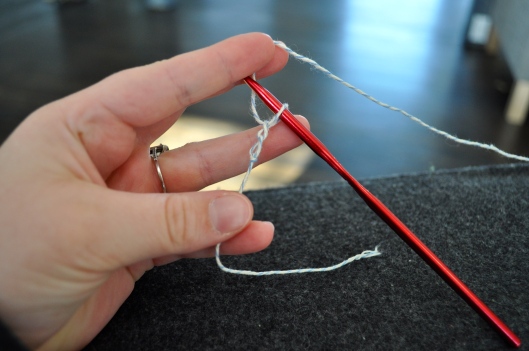 Next you will start chaining onto your knitting needle. Place the knitting needle on top of the working yarn, hook the yarn and pull it through the loop on your hook over the knitting needle.
Next you will start chaining onto your knitting needle. Place the knitting needle on top of the working yarn, hook the yarn and pull it through the loop on your hook over the knitting needle.
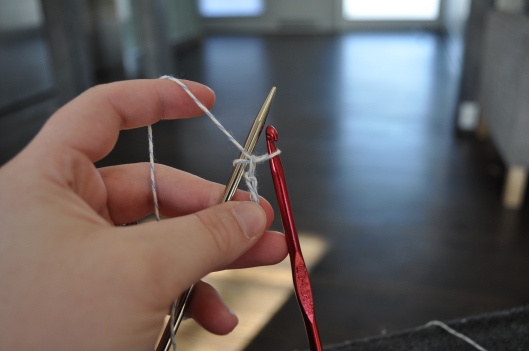 Move the working yarn back so that your knitting needle is again on top of the working yarn and continue until you have cast on the correct number of stitches.
Move the working yarn back so that your knitting needle is again on top of the working yarn and continue until you have cast on the correct number of stitches.
 Once you have the correct number of cast-on stitches, chain a few more stitches off of the needle. Your needle should look something like this.
Once you have the correct number of cast-on stitches, chain a few more stitches off of the needle. Your needle should look something like this.
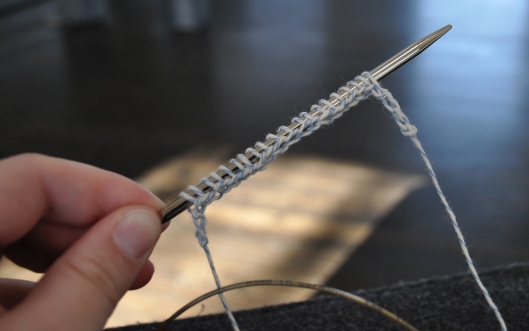 Now you can start knitting with your project yarn into the cast-on stitches.
Now you can start knitting with your project yarn into the cast-on stitches.
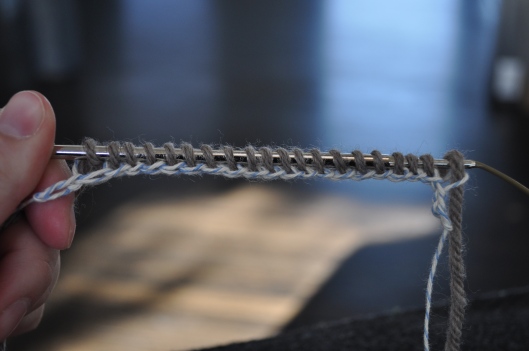 Jacqueline calls for you to work 5 rows in stockinette stitch, a turning row in which you break up the stockinette stitch with a row of purl bumps and cast-on additional stitches for the ribbing panel, and then 5 more rows in stockinette stitch (plus the ribbing section). So in the case of this pattern, your work should look something like this.
Jacqueline calls for you to work 5 rows in stockinette stitch, a turning row in which you break up the stockinette stitch with a row of purl bumps and cast-on additional stitches for the ribbing panel, and then 5 more rows in stockinette stitch (plus the ribbing section). So in the case of this pattern, your work should look something like this.
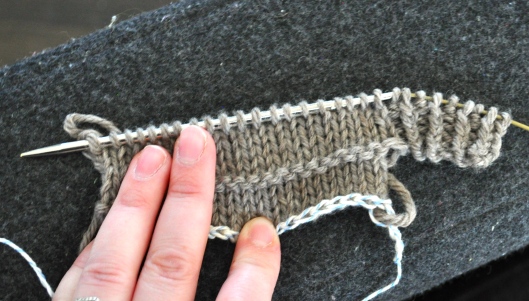 You now need to transfer those provisionally cast-on stitches to a needle so you can work with them. To do this, unravel the last stitch that you chained so that you can “unzip” your crochet chain and begin to pick up the live stitches that are now exposed.
You now need to transfer those provisionally cast-on stitches to a needle so you can work with them. To do this, unravel the last stitch that you chained so that you can “unzip” your crochet chain and begin to pick up the live stitches that are now exposed.
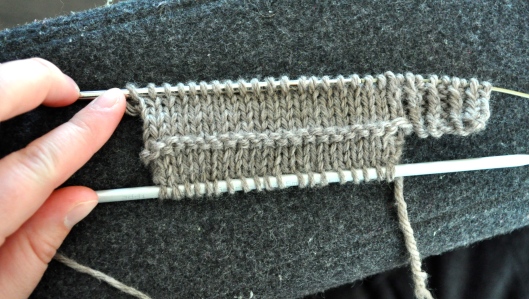 To join the hem, fold the fabric at the turning row so that the wrong sides of the work are touching and the live stitches on both needles are aligned. On the next row, you are going to purl across, purling through the stitch on both needles for each stitch.
To join the hem, fold the fabric at the turning row so that the wrong sides of the work are touching and the live stitches on both needles are aligned. On the next row, you are going to purl across, purling through the stitch on both needles for each stitch.
Here’s how the hem should look after you have consumed all of the provisionally cast-on stitches. There will be one less cast-on stitch than your working stitches, so you will purl one stitch from your working needle by itself (i.e. there is no cast on stitch for you to purl with it).
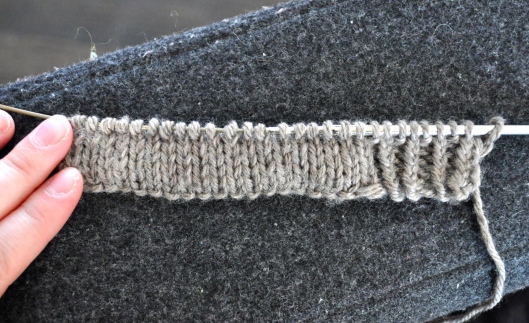 Here is your hem after a few more rows of knitting in pattern.
Here is your hem after a few more rows of knitting in pattern.
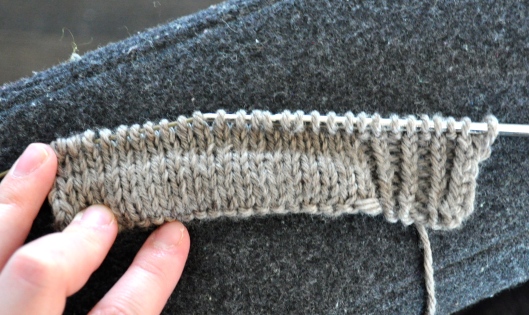
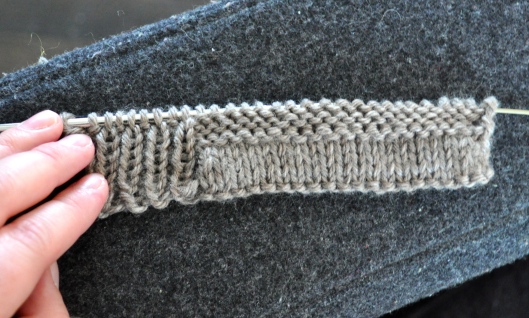 I hope this is helpful for anyone struggling with the hem for Jacqueline (or any other hemmed pattern for that matter)! Let me know if anything could be made clearer.
I hope this is helpful for anyone struggling with the hem for Jacqueline (or any other hemmed pattern for that matter)! Let me know if anything could be made clearer.

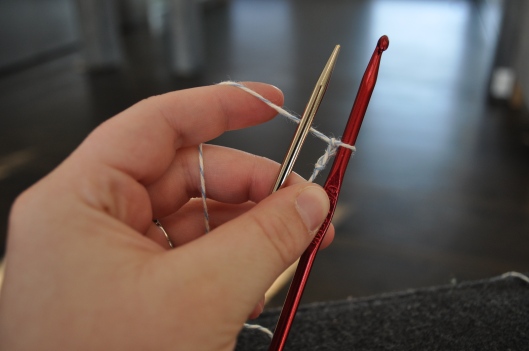
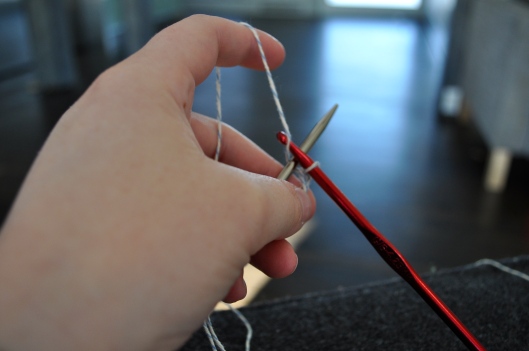
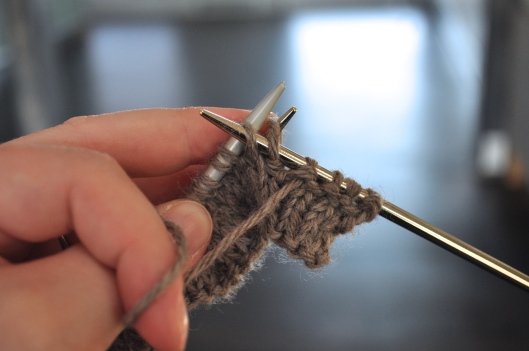

Wonderful tutorial for provisional cast on and hemming. Love the photos as well.
very well explained and good pictures! thanks
Hi. You have a very good photo-tutorial. I want to ask you something. I have a pattern for a cardigan but it calls for k2tog. I am not understand how to work the live sts with cast-on. Should i take one from the provisonal sts to left needle and knit a k2tog? And then what?I transfer the stich comes where? It is really confusing for me…I appreciate it if you can help me…